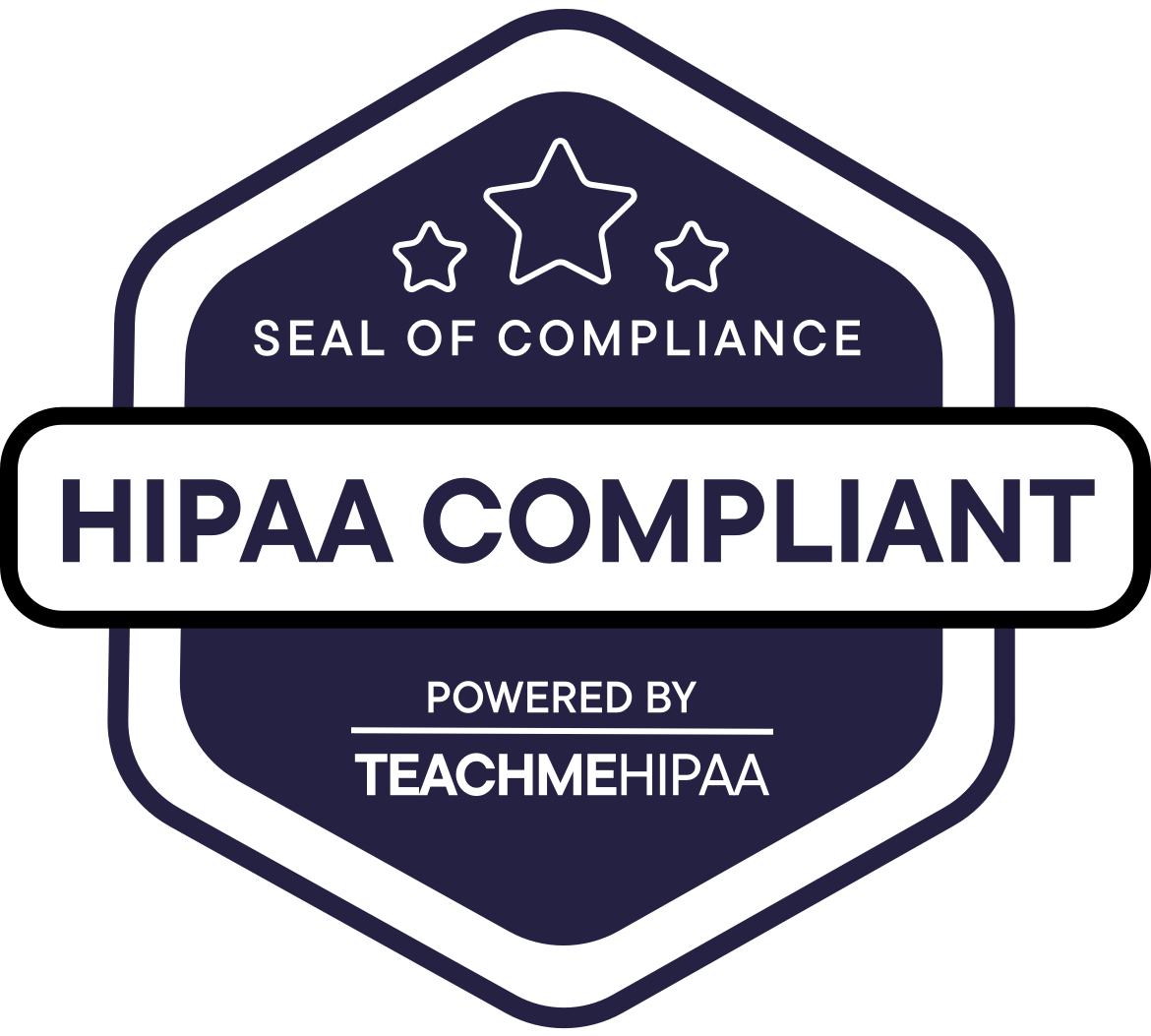

What Is A Nova Scotia Duck Tolling Retriever?
by Haley Mills
Last updated: July 14, 2025
Verified and Approved by:
Angela Morris,
MSW, LCSW
Fact Checked

The Nova Scotia Duck Tolling Retriever, often referred to as a Toller, is a unique and fascinating breed of dog that originated in Nova Scotia, Canada. This breed was developed specifically for hunting waterfowl, and their skills and abilities in this area are truly remarkable.
With their striking appearance and friendly disposition, Tollers have also gained popularity as beloved family pets and show dogs.
Regarding physical characteristics, Tollers are medium-sized dogs with a well-muscled build. They have a dense, water-repellent double coat that comes in various shades of red and orange, often with white markings on their chest, paws, and tail tip. With their webbed feet and strong tail, Tollers are excellent swimmers known for their ability to lure waterfowl within range by playfully retrieving sticks or balls near the water’s edge. This unique hunting technique, known as “tolling,” is where the breed gets its name.
In terms of personality, Tollers are known for being intelligent, energetic, and eager to please. They are highly trainable and excel in various dog sports and activities, such as agility, obedience, and dock diving. Tollers are also known for their friendly and affectionate nature, making them great companions for families and individuals alike. However, their high energy levels require regular mental and physical stimulation to prevent boredom and destructive behavior.
With proper training, socialization, and exercise, a Nova Scotia Duck Tolling Retriever can be a loyal and well-rounded addition to any household.
Key Takeaways
- Nova Scotia Duck Tolling Retrievers have a water-repellent double coat that requires regular brushing to maintain its condition.
- The breed experiences moderate shedding throughout the year, with heavier shedding during seasonal changes. Regular brushing helps to remove loose hair and prevent matting.
- Nova Scotia Duck Tolling Retrievers are prone to ear issues, so regular ear cleaning is vital for their overall health and well-being.
- Dental care is essential for good oral hygiene in Nova Scotia Duck Tolling Retrievers, including regular brushing and providing dental treats or toys.
Origins and History of the Nova Scotia Duck Tolling Retriever
So, you already know that the Nova Scotia Duck Tolling Retriever is a dog breed, but let me tell you about its fascinating origins and history.
The Nova Scotia Duck Tolling Retriever, also known as Toller, originated in the early 19th century in Nova Scotia, Canada. The breed was developed by hunters who wanted a versatile and skilled dog to assist in duck hunting.
The evolution and adaptations of the Nova Scotia Duck Tolling Retriever are quite interesting. It is believed that the breed descended from a mix of various retrieving dogs, including spaniels, setters, and collies. These dogs were bred with local water dogs, resulting in a breed with exceptional swimming skills and a unique hunting technique called “tolling.”
Tolling is a method where the Toller plays and frolics at the shoreline, attracting the attention of ducks. As the ducks become curious and swim closer to investigate, the Toller then retrieves the downed ducks. Combined with the breed’s excellent retrieving abilities and high energy levels, this clever technique made them highly effective in duck hunting.
The role and significance of the Nova Scotia Duck Tolling Retriever in duck hunting cannot be understated. They were specifically bred to lure and retrieve ducks, making them an integral part of hunting. Their small to medium size, agility, and intelligence allowed them to navigate challenging terrains and retrieve ducks from land and water.
Today, while they’re still used in hunting, Tollers have also gained popularity as loyal and active family pets.
Physical Characteristics and Appearance
With their beautiful coat and graceful stature, this breed captivates all who look at them. Nova Scotia Duck Tolling Retrievers have medium-sized body that is well-balanced and muscular. They have a deep chest and a strong, straight back, which allows them to excel in agility and endurance. These retrievers have a slightly wedge-shaped head, with a long, tapering muzzle and a black nose. Their eyes are medium-sized and almond-shaped, giving them an intelligent and alert expression.
One of the most striking features of the Nova Scotia Duck Tolling Retriever is their coat. They have a double coat that is dense, water-resistant, and medium in length. The outer coat is straight and lies close to the body, while the undercoat is soft and insulating. This breed comes in different coat colors, including shades of red, ranging from golden to dark copper. Some individuals may have white markings on their chest, feet, or tail tip. Their coat color and texture help them blend in with the surroundings while working in the field.
Here is a table summarizing the physical characteristics of the Nova Scotia Duck Tolling Retriever:
| Characteristic | Description |
|---|---|
| Size | Medium-sized |
| Weight | 35-50 pounds (16-23 kg) for females, 45-60 pounds (20-27 kg) for males |
| Height | 17-21 inches (43-53 cm) for females, 18-22 inches (45-56 cm) for males |
| Coat Color | Shades of red, ranging from golden to dark copper, with or without white markings |
| Build | Well-balanced, muscular body with a deep chest and a strong, straight back |
In conclusion, the Nova Scotia Duck Tolling Retriever is a breed that combines beauty and athleticism. Their coat color, size, and build make them well-suited for their original purpose as hunting companions. Whether working in the field or being admired for their appearance, these retrievers never fail to impress.
Personality Traits and Temperament
Imagine having a furry companion who’s known for their friendly and outgoing nature, making them a perfect addition to any family. This is exactly what you can expect from a Nova Scotia Duck Tolling Retriever.
These social butterflies love being around people, making them excellent family pets. They’re known for their ability to entertain and make people laugh, as they have a playful and mischievous side.
To ensure that your Nova Scotia Duck Tolling Retriever develops a well-rounded personality, it’s important to engage in proper socialization techniques from a young age. Exposing them to different people, animals, and environments will help them become confident and adaptable. They thrive on human companionship and enjoy participating in various activities like obedience training and agility courses.
While Nova Scotia Duck Tolling Retrievers are generally well-behaved, like any breed, they can have some common behavioral issues. They’re highly intelligent and energetic, which means they need plenty of physical exercise and mental stimulation. Without these outlets, they may become bored and turn to destructive behaviors such as excessive chewing, digging, or being overly mouthy, carrying and chewing on household objects.
Tollers can also be rambunctious, especially as puppies, and may bark or howl when they’re excited or confronted with something unfamiliar. Early socialization and consistent training are essential to help them become well-adjusted companions. They can also show signs of independence or stubbornness, so patient, positive reinforcement techniques work best.
In addition, Tollers are very people-oriented and may develop separation anxiety if left alone for extended periods. Providing structure, interactive toys, and social engagement can go a long way in preventing behavioral problems and helping your dog thrive.
Training and Exercise Requirements
Regular exercise is essential to train and keep a Nova Scotia Duck Tolling Retriever healthy. These dogs are active and energetic, so they require plenty of physical activity to keep them mentally and physically stimulated.
Training techniques for Nova Scotia Duck Tolling Retrievers should focus on positive reinforcement and consistency. These dogs are intelligent and eager to please, making them highly trainable. Rewards such as treats or praise, when they exhibit desired behavior, can help motivate them during training sessions. Be patient and consistent with training, as these dogs can be sensitive and may become anxious or stressed if treated harshly.
In addition to training, Nova Scotia Duck Tolling Retrievers also require a regular exercise routine. They’re a sporting breed and have a natural instinct for retrieving, so activities such as playing fetch or participating in dog sports like agility or flyball can be great ways to keep them physically active. They also enjoy swimming, so if you have access to a pool or a safe body of water, this can be a beneficial form of exercise for them.
Giving them at least 30 minutes to an hour of exercise each day is recommended to keep them healthy and prevent them from becoming bored or destructive.
With the right training techniques and exercise routine, a Nova Scotia Duck Tolling Retriever can be a well-behaved and happy companion.
Do Nova Scotia Duck Tolling Retrievers often need to be rescued or adopted from these organizations?
Nova Scotia Duck Tolling Retrievers are occasionally in need of rescue or adoption, and top animal rescue organizations play a vital role in finding these dogs new homes. These organizations diligently work to provide a second chance to Tollers in need and ensure they find loving families to care for them.
Health and Care for the Nova Scotia Duck Tolling Retriever
Nova Scotia Duck Tolling Retrievers are generally healthy, but they are more prone than some breeds to certain inherited conditions. Being familiar with these can help you catch problems early and support your Toller’s long-term well-being.
Hip and Elbow Dysplasia: These joint issues can cause stiffness, pain, and arthritis as dogs age. Regular vet checkups and maintaining a healthy weight can help manage discomfort and slow progression.
Autoimmune Disorders: Conditions like systemic lupus erythematosus can trigger inflammation in the skin, joints, and organs. Flare-ups may be worsened by sun exposure, so outdoor time should be monitored.
Addison’s Disease (Hypoadrenocorticism): This hormonal disorder is more common in Tollers than in many other breeds. Symptoms like vomiting, lethargy, or poor appetite can be vague. Routine blood work helps with early detection.
Epilepsy: Inherited epilepsy typically begins between six months and three years of age. Seizures vary in severity and usually require long-term medication and monitoring.
Hypothyroidism: Signs include weight gain, lethargy, hair loss, and skin issues. Once diagnosed through blood testing, it’s manageable with daily medication.
Patellar Luxation: Also known as a “slipped kneecap,” this issue can cause your dog to hop or skip for a few steps. Mild cases may not need treatment, while more severe ones could require surgery.
Eye Health Concerns
Nova Scotia Duck Tolling Retrievers are also prone to several inherited eye conditions that can impact their quality of life. Progressive retinal atrophy (PRA), for example, is a genetic disease that leads to gradual vision loss and, eventually, blindness. Early signs such as night blindness or dilated pupils may appear when your Toller is between three and five years old. While PRA is not painful, there is currently no cure, but a genetic test is available to help identify the risk.
Other eye conditions to watch for include:
- Cataracts: These cause the lenses of the eyes to become cloudy and can lead to blindness, particularly in older dogs. Some dogs adjust well to vision loss, but surgical removal of cataracts may be an option to restore sight.
- Distichiasis: This condition is caused by extra hairs growing on the inside of the eyelid, which can rub against the eye and cause discomfort or corneal ulcers. Treatments are available, and the prognosis is good once the offending hairs are removed.
- Persistent Pupillary Membrane: Occasionally, small strands of tissue remain attached to the iris after birth. These usually cause no problems but can sometimes affect vision.
- Corneal Dystrophy: This inherited condition results in small white crystal deposits forming in the cornea. While it often progresses slowly and doesn’t cause pain, it can obstruct vision in severe cases.
- Collie Eye Anomaly: A genetically linked disease that affects eye development and can cause blindness in severe cases. Unfortunately, there is no treatment, so regular eye exams are important, especially before breeding.
Annual eye exams by your veterinarian can help catch these issues early, allowing for better management and care.
Joint Health Concerns
It’s especially important to be aware of joint-related issues, as both hips and elbows are at risk for dysplasia in this breed. Dysplasia is an inherited condition where the joints do not develop properly, often leading to arthritis as the dog ages. Signs of joint problems may include stiffness, lameness in the legs, or difficulty rising after lying down. If you notice these symptoms, early intervention can help minimize discomfort and improve your dog’s quality of life. Veterinarians often recommend X-rays to catch these issues as soon as possible, and in severe cases, surgery may be considered. Keeping your Toller at a healthy weight is also crucial—overweight dogs are more likely to develop arthritis earlier, which can lead to unnecessary pain and mobility issues.
Additionally, providing a balanced diet that meets your dog’s nutritional needs is crucial for maintaining their overall health and well-being.
With regular veterinary care and early intervention, most of these conditions can be managed effectively, helping your Toller stay active and healthy for years to come.
In terms of grooming and coat care, the Nova Scotia Duck Tolling Retriever has a double coat that is water-repellent and requires regular brushing to keep it in good condition. This breed sheds moderately throughout the year, with heavier shedding occurring during seasonal changes. Regular brushing helps to remove loose hair and prevent matting. It is also essential to check and clean your dog’s ears regularly to prevent infections, as this breed is prone to ear issues. Additionally, dental care is essential for maintaining good oral hygiene and preventing dental problems. Regularly brushing your dog’s teeth and providing dental treats or toys can help keep their teeth clean and healthy.
General Wellness Tips
Much of what you can do to keep your Toller happy and healthy comes down to common sense and consistency. Make sure your dog gets plenty of exercise—these energetic retrievers thrive with daily activity. Watch their diet closely, as obesity can worsen joint issues and create new health concerns. Regularly brush their teeth and coat to promote good hygiene and comfort.
Routine Health Care
Stick to a schedule of routine examinations and vaccinations as recommended by your veterinarian. These regular check-ups are essential for catching potential health issues early and ensuring your dog stays up to date on preventive care.
Consider Pet Health Insurance
Unexpected medical tests and procedures can arise over your dog’s lifetime. Signing up for pet health insurance can provide peace of mind and help cover costs if health issues do occur.
By staying attentive to your dog’s needs and maintaining regular veterinary care, you’ll give your Nova Scotia Duck Tolling Retriever the best chance at a long, happy, and healthy life.
Recognizing Signs of Health Issues in a Nova Scotia Duck Tolling Retriever
Even subtle changes in your Nova Scotia Duck Tolling Retriever’s behavior or appearance can be early signs of a health concern. Staying alert and knowing what to look for can help you catch potential problems before they become serious.
Common symptoms that may need a vet visit
If your Toller shows any of the following signs, it’s a good idea to schedule a check-up with your veterinarian:
- Reduced appetite or noticeable changes in how much they eat or drink
- Bad breath, red gums, or visible dental problems
- Excessive scratching, chewing, or licking, along with patches of hair loss
- Unusual tiredness or decreased interest in play and activity
- Behavioral changes like anxiety, fearfulness, or unexplained aggression
When to seek immediate veterinary care
Some symptoms call for prompt attention. Contact your vet right away if your dog experiences:
- Frequent ear scratching, head shaking, or discharge from the ears
- Trouble urinating or urine that looks discolored
- Cloudy or red eyes, or any signs of discomfort around the eyes
- Persistent vomiting, diarrhea, or sudden lethargy
- Difficulty walking, reluctance to use stairs, or sudden stiffness in the legs
- Noticeable weight loss or gain, or a dull, thinning coat
- Unusual trembling or shaking
- Lack of response to familiar sounds, which may suggest hearing issues
Trust your instincts
You know your dog best. If something feels off, even if the symptoms seem minor, it’s always worth checking in with your vet. Catching health concerns early can lead to more effective treatment and peace of mind for both you and your Toller.
When to Seek Immediate Veterinary Attention for a Nova Scotia Duck Tolling Retriever
If your Nova Scotia Duck Tolling Retriever starts showing unusual symptoms or sudden changes in behavior, don’t wait. Some signs could indicate a serious health issue that needs urgent veterinary care.
Watch for the following warning signs:
- Persistent ear issues like head shaking, redness, tenderness, or unusual discharge
- Urinary problems, including straining, discomfort, or blood in urine
- Eye changes such as redness, cloudiness, itching, or excessive tearing
- Lethargy or droopy demeanor, especially when combined with vomiting or diarrhea
- Reluctance to move, play, go for walks, or do normal activities
- Trembling or uncontrolled shaking, even if mild
- Coat dullness or thinning, along with unexplained weight gain or loss
- Seeming more easily startled, or not responding to familiar sounds
- Difficulty standing, climbing stairs, or unusual movement patterns like “bunny hopping”
Always trust your gut—if something feels off with your Toller, reach out to your vet. Early action can make all the difference in keeping your dog healthy and happy.
Deafness in Nova Scotia Duck Tolling Retrievers
Deafness can occur in Nova Scotia Duck Tolling Retrievers, especially in certain bloodlines. If your dog seems unresponsive to commands, doesn’t react to familiar sounds, or startles easily when approached from behind, it may be a sign of hearing loss rather than stubborn behavior.
While some cases are inherited, others can result from chronic or severe ear infections. If your Toller’s ears appear healthy but they’re still not responding normally, your vet might recommend a specialized hearing test, like the BAER (Brainstem Auditory Evoked Response) test, to check their auditory function.
Regular ear care and early attention to any signs of discomfort or infection are the best ways to protect your Toller’s hearing and keep communication clear.
Cryptorchidism in Male Nova Scotia Duck Tolling Retrievers
Cryptorchidism, or retained testicle, is a condition where one or both testicles fail to descend into the scrotum in male puppies. In Nova Scotia Duck Tolling Retrievers, this can occasionally occur and is typically identified during early vet visits.
If a testicle remains inside the abdomen, it increases the risk of testicular cancer and other complications. The recommended treatment is surgery to remove both testicles, which also prevents the condition from being passed on genetically.
Regular veterinary checkups during puppyhood will help catch this issue early so you can make informed decisions for your dog’s long-term health.
Epilepsy in Nova Scotia Duck Tolling Retrievers: Types, Diagnosis, and Management
Epilepsy is a condition that can affect Nova Scotia Duck Tolling Retrievers, and it’s helpful to understand its different forms:
- Reactive epilepsy: Triggered by metabolic or external factors like low blood sugar, toxins, or organ dysfunction.
- Secondary epilepsy: Caused by structural issues in the brain such as tumors, trauma, or a past stroke.
- Primary (Idiopathic) epilepsy: Diagnosed when no other cause is found, and often inherited—Tollers can be genetically prone to this type.
Symptoms usually begin between six months and three years of age. If your Toller has a suspected seizure, your vet may run tests to rule out metabolic or structural causes before confirming idiopathic epilepsy.
Managing epilepsy often involves daily medication to reduce seizure frequency. Your dog will also need regular blood tests to monitor treatment and catch any side effects early.
If your dog has a seizure:
Stay calm and gently clear the area to prevent injury. Don’t try to hold their mouth—this can be dangerous and isn’t helpful. Take note of how long the seizure lasts and call your veterinarian or emergency clinic right away.
With proper care and ongoing support, most Tollers with epilepsy can still lead active, happy lives.
Cleft Lip and Palate in Nova Scotia Duck Tolling Retrievers
Cleft lip and cleft palate are birth defects that can occasionally occur in Nova Scotia Duck Tolling Retrievers. A cleft lip is a split in the upper lip, while a cleft palate is an opening in the roof of the mouth. These conditions form before birth and can vary in severity.
Mild cases might not cause much trouble, but more serious ones can make it difficult for puppies to nurse, eat, or breathe properly. Sometimes, milk may even come out of the nose when feeding—an early sign that something’s wrong.
Your vet will typically check for a cleft lip or palate during your puppy’s first exam. If diagnosed, treatment depends on how severe the issue is. Some dogs may not need any intervention, while others may require surgery to help them eat and grow normally.
If your Toller puppy shows any trouble feeding or breathing, especially in the early weeks, get a vet’s opinion right away. Early care makes a big difference in managing cleft conditions and setting your puppy up for a healthy life.
Heart Health Concerns in Nova Scotia Duck Tolling Retrievers
Nova Scotia Duck Tolling Retrievers can be prone to certain heart conditions, with pulmonic stenosis being one of the most common. This congenital disorder partially blocks blood flow from the heart to the lungs, forcing the heart to work harder than normal.
Signs of pulmonic stenosis may include reduced stamina during play, fainting, labored breathing, coughing, or slower growth in puppies. If your Toller seems unusually tired or struggles to breathe, it’s important to consult your veterinarian.
During routine check-ups, your vet may suggest diagnostic tests such as chest X-rays or an echocardiogram to evaluate heart function. If pulmonic stenosis is confirmed, treatment options vary depending on the severity. Mild cases may only require monitoring, while more severe conditions might benefit from medications or surgery. Early diagnosis and proper care can help your Toller lead a healthy, active life.
Umbilical Hernias in Nova Scotia Duck Tolling Retrievers
An umbilical hernia is a small opening in the muscle wall near a dog’s belly button, allowing fat or even part of the intestine to poke through. Nova Scotia Duck Tolling Retrievers are slightly more prone to this hereditary condition than some other breeds.
Most umbilical hernias appear as a soft bump at the center of the belly. Often, this bump is painless and made up of fat that can be gently pushed back in. However, if part of the intestine becomes trapped in the opening and can’t be moved, it can lead to serious issues. Signs like swelling, pain, or vomiting mean it’s time to call your vet immediately.
Small hernias may close on their own as a puppy grows. Others might require a simple surgical fix, which is often done during a routine spay or neuter. Your vet will check for umbilical hernias during early exams and guide you on whether any treatment is needed.
With quick attention, umbilical hernias are usually easy to manage, and most Tollers bounce back without missing a beat.
Patellar Luxation in Nova Scotia Duck Tolling Retrievers
Patellar luxation, commonly called a “slipped kneecap”, is a joint condition that can occasionally affect Nova Scotia Duck Tolling Retrievers. It happens when the kneecap shifts out of place, often leading to temporary limping or an odd skipping motion.
You might notice your Toller suddenly holding up one back leg or hopping for a few strides, then returning to normal as if nothing happened. This type of behavior is a classic sign of patellar luxation.
Mild cases that only affect one leg may not require major treatment beyond joint supplements or arthritis medication, which your vet can recommend. In more serious cases, where the kneecap frequently dislocates or causes discomfort, surgery might be the best option to keep your dog comfortable and mobile.
Regular vet checkups can help spot joint issues early and keep your Toller active, pain-free, and enjoying life to the fullest.
Lupus in Nova Scotia Duck Tolling Retrievers
Lupus, particularly systemic lupus erythematosus, is a rare autoimmune disease that can affect Nova Scotia Duck Tolling Retrievers more often than some other breeds. In dogs with this condition, the immune system mistakenly attacks the body’s own tissues, leading to chronic inflammation in the skin, joints, and internal organs.
Symptoms often begin when a Toller reaches middle age—typically between three and seven years old. Signs may vary, but may include fatigue, joint pain, skin sores, or changes in behavior or appetite.
While lupus cannot be cured, your veterinarian can prescribe medications to help manage the symptoms and improve your dog’s comfort and quality of life. One key consideration is sun exposure, which can trigger flare-ups or worsen symptoms. It’s best to avoid long periods in direct sunlight and consider using a dog-safe sunscreen on sensitive areas like the nose and ears.
With the right care and regular veterinary checkups, many Tollers with lupus can continue to lead happy, active lives.
Thyroid Issues in Nova Scotia Duck Tolling Retrievers
Nova Scotia Duck Tolling Retrievers, like many breeds, can be prone to thyroid problems, especially hypothyroidism. This condition happens when the thyroid gland doesn’t produce enough hormones to properly regulate your dog’s metabolism.
Common signs of hypothyroidism include:
- Dry or flaky skin and a dull-looking coat
- Unusual or excessive hair loss
- Weight gain despite a normal appetite
- Frequent skin infections or irritation
- Behavioral shifts like anxiety, depression, or even aggression
Routine veterinary checkups are important for early detection. Many vets recommend annual blood tests to monitor your dog’s thyroid hormone levels.
If your Toller is diagnosed with hypothyroidism, treatment usually involves a simple daily pill to replace the missing hormones. With consistent care and medication, most dogs respond well and return to their usual energetic, healthy selves.
Preventing Obesity in Nova Scotia Duck Tolling Retrievers
Obesity can seriously affect the health and quality of life of a Nova Scotia Duck Tolling Retriever. Carrying extra weight increases the risk of joint problems like hip dysplasia and arthritis, while also contributing to metabolic disorders, back issues, and heart disease.
To help your Toller maintain a healthy weight, it’s important to monitor portion sizes and feeding routines. While it may be tempting to give extra treats or share table scraps, these habits can lead to weight gain. Instead, opt for healthy rewards like an extra walk, a short play session, or brushing their coat—activities that offer affection without the calories.
Consistent daily exercise, a nutritionally balanced diet, and regular veterinary check-ups are the best ways to prevent obesity and promote your dog’s long-term well-being.
DNA Testing and Genetic Screening for Nova Scotia Duck Tolling Retrievers
DNA testing and genetic screening play an important role in protecting the long-term health of Nova Scotia Duck Tolling Retrievers. These tests can identify inherited conditions like hip dysplasia and progressive retinal atrophy before symptoms appear, allowing for proactive care.
With early detection, your veterinarian can help create a tailored plan that may include specialized diets, joint-friendly exercise, or more frequent monitoring. Resources like the Orthopedic Foundation for Animals (OFA) offer breed-specific guidance on recommended tests.
Whether you’re caring for a companion or planning to breed, genetic screening helps you make informed decisions that support your Toller’s health and well-being. Staying up to date with your vet and recent advances in testing is a key part of responsible ownership.
Parasite Prevention and Management
Like all dogs, Nova Scotia Duck Tolling Retrievers are vulnerable to parasites—both external pests like fleas, ticks, and ear mites, and internal threats such as heartworms, roundworms, hookworms, and whipworms. These parasites can spread through contaminated water, soil, or mosquito bites.
Left unchecked, infestations can cause anything from minor skin irritation to serious digestive or cardiovascular issues. Some parasites can even be transmitted to humans, making prevention a top priority for the whole household.
To keep your Toller safe:
- Visit your vet regularly for check-ups and routine parasite testing.
- Use recommended monthly preventatives for fleas, ticks, and heartworms (popular options include Frontline, NexGard, and Heartgard).
- Please keep your dog’s environment clean, and avoid letting them drink from unknown water sources.
- After outdoor play, check their ears, coat, and paws for any signs of pests.
A proactive parasite prevention routine helps protect your Toller’s health and keeps your entire home safe.
Understanding Addison’s Disease in Nova Scotia Duck Tolling Retrievers
Addison’s disease, or hypoadrenocorticism, is a condition in which a dog’s adrenal glands fail to produce enough essential hormones. It can be challenging to spot, as early signs—such as low energy, vomiting, or appetite loss—often resemble other minor illnesses.
Nova Scotia Duck Tolling Retrievers appear to have a higher risk of developing Addison’s disease compared to many other breeds. Because of this, it’s important for owners and vets to be proactive. Your vet may recommend occasional blood tests to check your dog’s electrolyte levels, especially if your Toller is showing vague or recurring symptoms.
With regular monitoring and early detection, Addison’s disease can be managed effectively, allowing your dog to live a full and happy life.
Bacterial and Viral Infections in Nova Scotia Duck Tolling Retrievers
Like all dogs, Nova Scotia Duck Tolling Retrievers can be at risk for bacterial and viral infections, including parvovirus, rabies, and distemper. Thankfully, most of these diseases are preventable through routine vaccinations.
Your veterinarian will recommend a vaccination schedule based on your dog’s age, local disease risks, and lifestyle. Staying on top of these shots is one of the best ways to protect your Toller’s health.
In addition to vaccinations, simple hygiene—like cleaning food and water bowls and keeping your dog’s living area tidy—can also help reduce the risk of illness. Regular vet checkups and preventative care go a long way in keeping your dog healthy and thriving.
Why You Should Spay or Neuter Your Nova Scotia Duck Tolling Retriever
Spaying or neutering your Nova Scotia Duck Tolling Retriever isn’t just about preventing unwanted litters—it’s also an important step toward supporting your dog’s long-term health and well-being. These procedures reduce the risk of certain reproductive cancers and other health conditions, potentially leading to a longer, healthier life.
There are additional benefits, too. Since your dog will be under anesthesia, it’s a convenient time for your veterinarian to perform other useful procedures, such as hip X-rays (helpful for breeds at risk for hip dysplasia) or removing retained puppy teeth. Pre-surgical blood work is also typically recommended to screen for any hidden issues and ensure your dog is safe for anesthesia.
Choosing to spay or neuter your Toller is a responsible decision that benefits both your pet and the breed—helping reduce the number of dogs in shelters while giving your companion the best shot at a happy, healthy future.
Conclusion
In conclusion, the Nova Scotia Duck Tolling Retriever is a unique and versatile breed with a fascinating history. Originally developed in Canada, these retrievers were bred to lure and retrieve ducks for hunters. They have distinctive physical characteristics, including a red coat and webbed feet, which make them well-suited for their original purpose.
In addition to their physical traits, Nova Scotia Duck Tolling Retrievers have a friendly and outgoing personality. They’re known for being intelligent, playful, and eager to please. They make excellent family pets and are often good with children and animals.
To keep a Nova Scotia Duck Tolling Retriever happy and healthy, provide them with regular training and exercise. These dogs are highly active and require plenty of mental and physical stimulation. They excel in obedience training, agility, and retrieving games.
Regarding health and care, Nova Scotia Duck Tolling Retrievers are generally healthy. However, like all dogs, they’re prone to specific health issues, such as hip dysplasia and progressive retinal atrophy. Regular veterinary check-ups and a balanced diet are essential for maintaining their well-being.
Certify Your Emotional Support Animal Today

Why You Can Rely on Us?
At Wellness Wag, we believe your pet deserves care rooted in both science and compassion. Each article is carefully researched, written in clear language for pet owners, and then reviewed by qualified professionals to ensure the information is evidence-based, current, and practical for real-life care. Our goal is to help you feel confident in making informed decisions about your pet’s health and well-being.
Reviewed by
Angela Morris, MSW, LCSW
Angela is a licensed clinical social worker with 20 years of experience in patient advocacy and community mental health. She has assisted numerous clients with ESA evaluations and brings a deep understanding of disability accommodations, ensuring that all information is accurate, supportive, and practical.

Written by :
Haley Mills
Last Updated :
July 14, 2025












